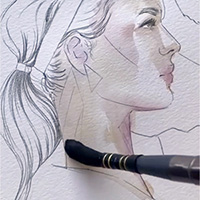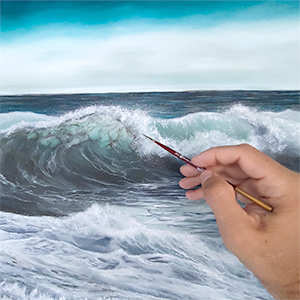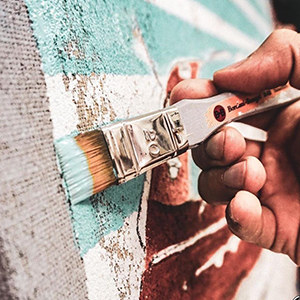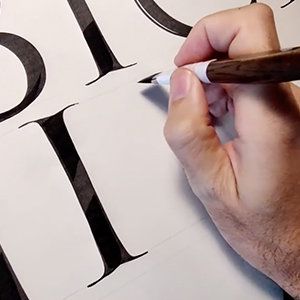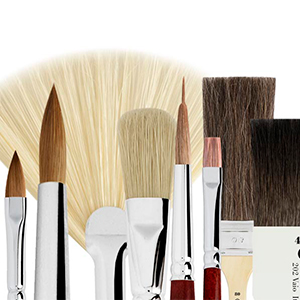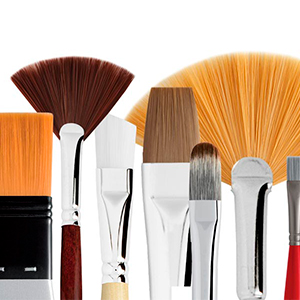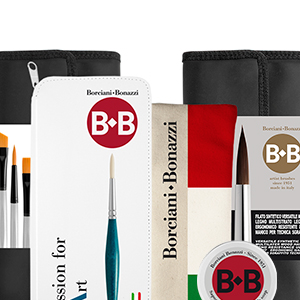Watercolor pencils: how to choose and use them
What are watercolor pencils?
The substantial difference between watercolor pencils and traditional ones is not in the external appearance, but in the composition of the pencil lead.
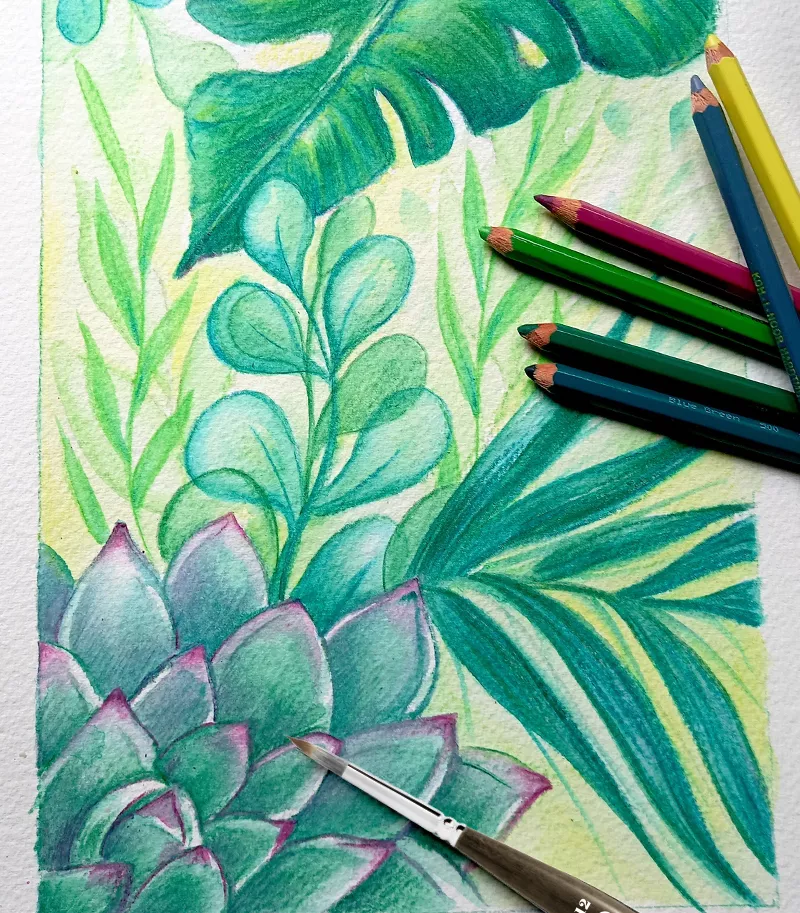
The lead of watercolor pencils is a mixture of pigments and water-soluble waxes, which allow you to dissolve the stroke of these pencils with water.
Wetting the mark of an ordinary pencil potentially means ruining the job, being a dry medium. In the case of watercolor pencils, water, once in contact with the color, allows the artist to create unique and particular shades.
All this is possible thanks to the composition of the lead which, as mentioned above, is produced thanks to water-soluble elements. So if traditional pencils are water resistant, the pigments of the watercolor can be diluted in water. Both can be combined to achieve interesting and creative effects.
Watercolor pencils are quite versatile accessories that can be used in very different ways. The initial distinction is: watercolor graphite pencils and watercolor pencils.
The watercolor graphite has the traditional deep gray tone of the classic drawing pencils and above all the same gradation of softness, which starts from the hardness of pencils H, passing through the intermediate tones of graphites HB and F up to the soft and more intense B.
As for the watercolor, the shades create the work, and then you can use leads with different hardness to have interesting chiaroscuro effects: the watercolor graphite leads just shaded with a slight passage of water brush, gives the stroke great expressiveness and more or less soft shades. If you work in overlap on strokes created with permanent pencils the work will acquire relief and intensity difficult to achieve with other techniques.
Many contemporary illustrators use watercolor graphites on watercolor works to give more incisiveness to the stroke.
Watercolor pencils have different characteristics depending on the manufacturer: some have pigments and waxes completely water-soluble, and then melt perfectly on the sheet with a light passage of water creating a fluid and intense color. Others, on the other hand, have a high percentage of waxes inside and keep the "sign" even after dilution; these types are mainly used for the medium mix technique, which combines different painting practices for layered effects of great visual impact.
As for the classic watercolor, tube or godet colors, the substantial difference is in the percentage of pigment contained within the composition: the Studio series will have less pigmentation and therefore less intense colors, but easier to use, while the Professional Series with high concentration will have a more intense color rendering and need more familiarity with the colors for optimal results.
How to use watercolor pencils
Specifically it is possible to use watercolor pencils as normal pencils. Not a few artists prefer pencils with hydrophilic waxes, which are much less hard than others and facilitate the effects of overlap with the technique of hatching at different inclinations.
Using watercolor and graphite pencils, the basic techniques are as follows.
Dry on dry
This technique uses the soluble component of watercolor pencils. The dry on dry technique involves first of all the drawing of the contours of the figures that you want to paint: flowers, landscapes, portraits and what else dictates the creativity...
To draw the contours you can use a graphite pencil or a watercolor pencil of a compatible color with the painting you intend to do. A light passage of water with the brush on the stroke creates a first draft that can be defined as a sketch.
Filling in the empty spaces, you proceed with the coloring of the drawing with watercolor pencils, taking advantage of the white of the sheet for lighter areas. To obtain different gradations of color, already in this first phase, you can use a pressure difference in the use of pencils or an overlapping passage of cross hatching.
After the work of coloring with the pencil, you go to the brush: moistening the tip in clean water and passing it on the colored areas, always starting from the lightest shade towards the darkest, so as to obtain all the desired shades.
The pencil strokes disappear, and the drawing will assume all the typical features of watercolor painting.
Wet on dry
Technique used especially in the early stages of learning the coloring watercolor pencils,it doesn’t use the brush, but they immerse the tip of pencils in water.
The stroke will be a thick and vibrant line, which is absorbed almost immediately by the paper and can hardly be removed with another addition of water.
Ideal for single-color sketches and for overlapping strokes and glazes to other techniques for greater incisiveness, does not fully use the water effect of watercolor mines.
It is very important to dry the pencils with a paper towel so that you can keep them in good condition.
Dry on wet
To use this technique using watercolor pencils, you will need to draw on a high-quality watercolor paper of at least 300grams.
We trace the shapes of the design that we want to do with a very light stroke.
After fixing the sheet to the work surface with adhesive tape paper, with a brush you will proceed to wet it, taking care to use a homogeneous spread and a fair amount of water.
On wet paper it will be possible to start coloring with watercolor pencils. This technique can be more difficult than dry on dry, but with clear ideas and steady hand we will get very expressive paintings and loads of color.
Wet on wet
In this technique watercolor pencils are used as real watercolors: after wetting the sheet of high grammage, as for the dry technique on wet, on an acetate sheet or very smooth apart (fundamental is that it is not too absorbent), apply the colors that we intend to use in the painting, rubbing the pencils on the surface to release water-soluble pigment powder.
This will allow you to use this sheet as an authentic palette in which to dip wet brushes, always taking care to start from the lighter color to the darker shade as for the technique of watercolor.
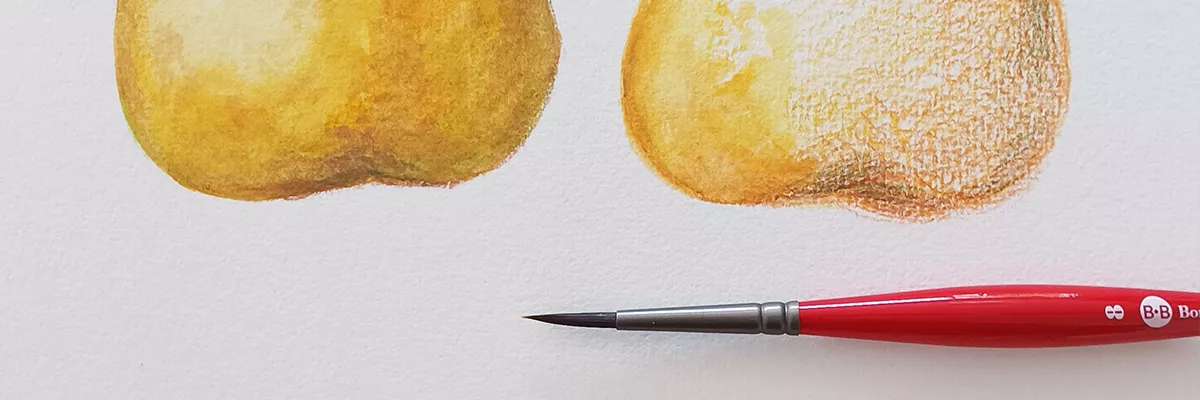
The paper for watercolor pencils
The supports and accessories to use watercolor pencils are various, especially depending on the technique you want to use.
In the event that these are used as normal colored pencils will not serve other than drawing paper, with the grain you prefer: smooth or rough, will be a stylistic choice of the artist based on the result you want to achieve.
Different is the case when you want to use watercolor pencils to "paint", making full use of the water-soluble component: you will prefer watercolor paper, suitable for the "wet" uses typical of this medium.
The grammage must be from 300 grams onwards, while the choice of the finish that is between smooth, rough or hammered paper will always be based on the effects you want to achieve: in the case of smooth paper it will be possible to add more minute details and have a greater definition of the design, while on the rougher felt the color will become a material effect.
It is advisable to always fix the sheet of paper with adhesive tape, holding all four edges of the sheet to a rigid base to prevent ripples on contact with water.
For example, professional watercolor albums have sheets glued to all edges, except for a small segment, to avoid this operation.
The Brushes for watercolor pencils
The ideal brushes to use watercolor pencils have different characteristics depending on the hardness of the leads and especially the effect you want.
For wet on wet and wet on dry, the fibers should be soft and light, as for the classic watercolor technique. This way you will avoid "scratching" the wet paper and you will get intense and bright shades. Borciani e Bonazzi has a wide choice of Watercolor brushes, both in natural fur and synthetic fiber.
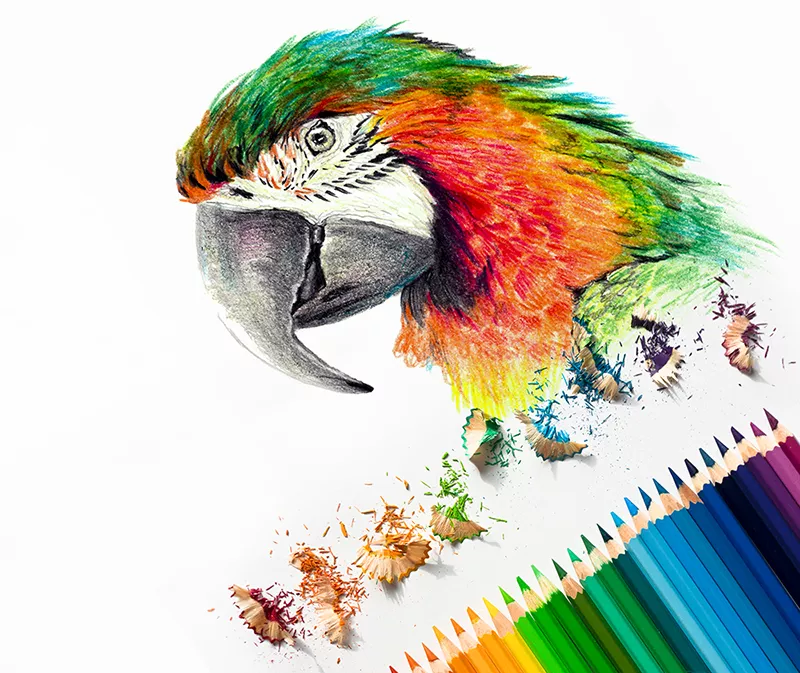
Natural hair brushes for watercolor pencils
Natural hair brushes are the perfect choice for artists who choose traditional methods.
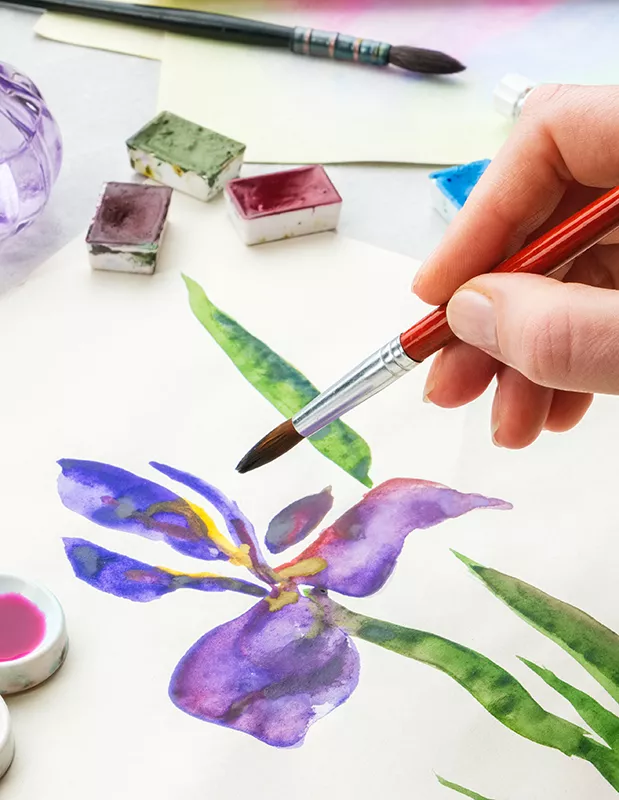
Sable and Kolinsky sable natural brushes

In Natural hair brushes in Kolinsky sable, soft and elastic, help to find the right balance between precision stretch and slow release of water. Valuable and durable over time, they are mainly used by professional illustrators and artists. They are transversal on many techniques, therefore not related only to the use of watercolor pencils.
An alternative to the precious Kolinsky Sable are the Red Marten brushes, slightly stiffer than the previous one, elastic and durable that help the water-soluble pigments to dilute perfectly in water.
Product Codes: #serie100 #serie101 #serie102 #serie102/c #serie105 #serie106 #serie107 #serie111 #serie112 #serie114 #serie115
Natural brushes in Ox hair

The extra fine Ox Hair brushes are used especially in the early stages of study, for their softness and extreme lightness of stroke.
Accessible by price and availability are the most popular among students. Suitable especially for pencils with a small waxy part, the brushes in ox hair move lightly color matter without leaving traces.
Product Codes: #serie70 #serie71 #serie72 #serie71/c #serie72/c #serie75
Synthetic brushes for watercolor pencils
The range of Borciani e Bonazzi brushes in synthetic fiber for watercolor, caring to environmental issues and sustainability, is very wide and offers countless varieties of fibers suitable for the use of watercolor pencils and watercolor.
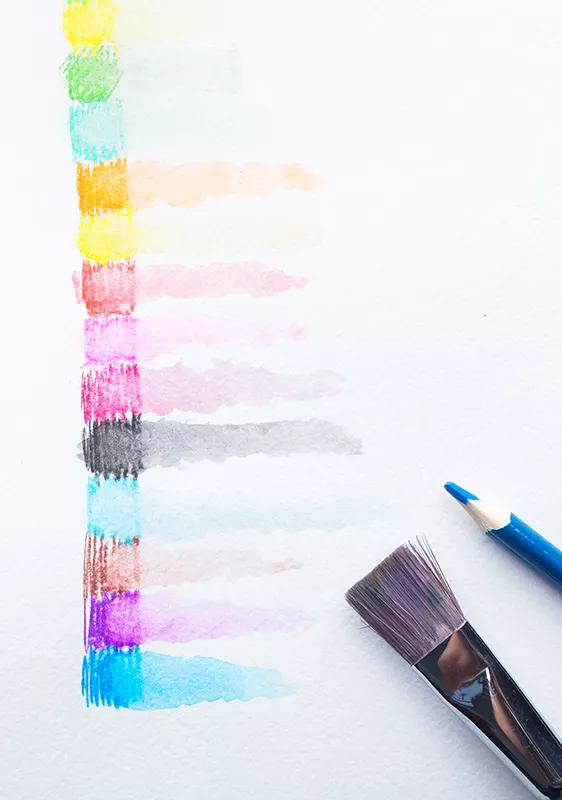
Silver synthetic fiber and Flamed synthetic fiber

The synthetic Silver fiber, rigid and elastic, is hollow and allows a total absorption and a slow release of water with the precision of a hard yarn.
It is ideal for watercolor pencils with a large waxy part, for processing details and details and it is usually better to use it on a dry basis to avoid scratching the watercolor paper when it is wet.
The synthetic fiber of the Flamed Brush is the perfect imitation of ox hair brushes with greater elasticity: removes and mixes the color of watercolor pencils with lightness and without traces, while giving the possibility of details.
Mongoose synthetic fiber is hollow, very thin in diameter, soft and suitable for dilutions. The absorption and slow release of water make the Mongoose series brushes the most suitable tool for those who start with watercolor pencils and watercolors.
Product Codes: #serie810 #serie812 #serie820 #serie821 #serie822
Kolinsky Synthetic Fiber

Used for its characteristics by both professional calligraphers with inks and inks, it is suitable for large backgrounds and watercolor blends. The synthetic Kolinsky Synthetic Fiber, a perfect imitation of the Kolinsky marten, offers the same performance at affordable prices.
The variety of brush tips of the 620 series The Perfect helps the performance of this technical fiber, the latest born in the research of synthetic fibers: high elasticity and slow release of water allow you to use MKS with many different techniques, from watercolor to oil to acrylic and gouache, and for different painting effects.
In the application with watercolor pencils, this synthetic fiber exceptionally rough and soft allows you to create color mixtures without traces and abundant dilutions, as to get to the maximum definition of the details. MKS brushes can be used on wet or dry surfaces, maintaining softness and precision and without scratching the paper.
Product Codes: #serie620 #serie621 #serie622 #serie623 #serie626 #serie107/s



























